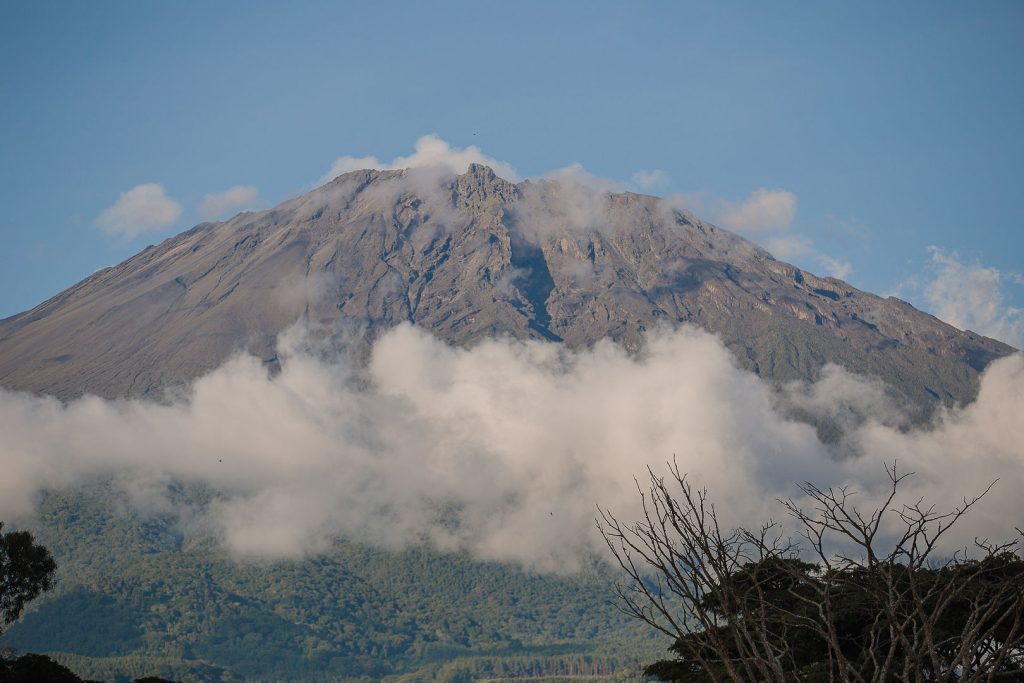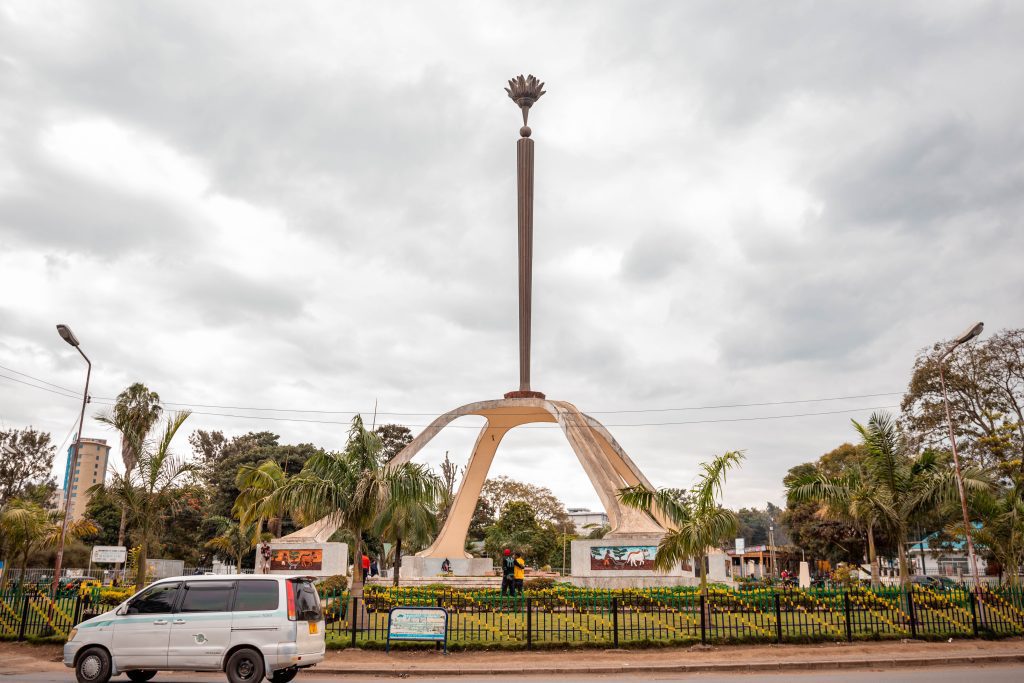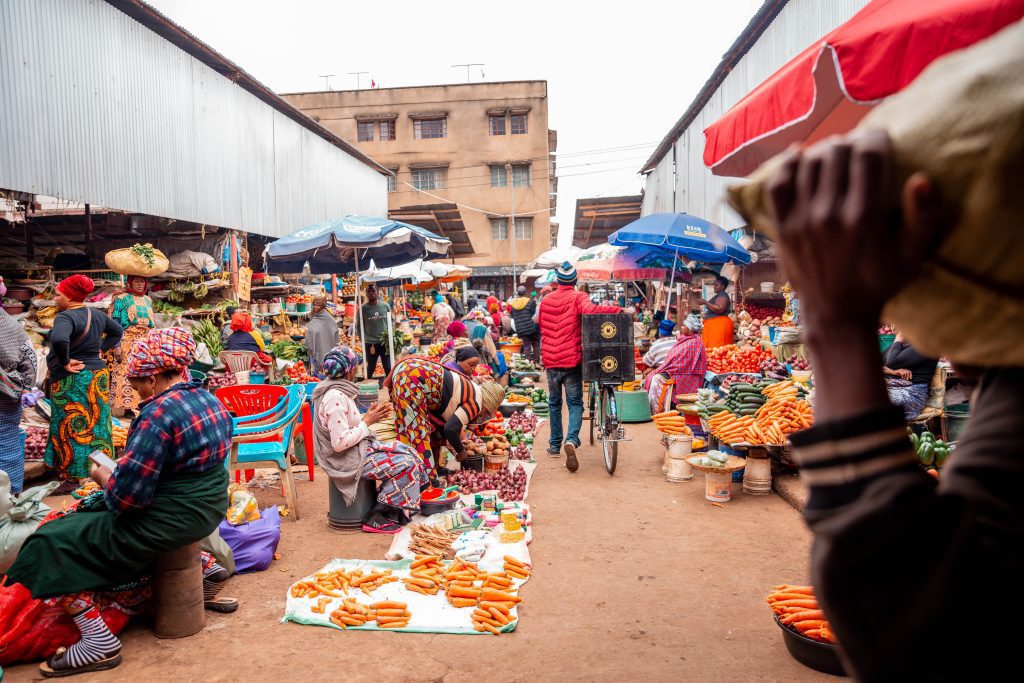The Complete Guide to Arusha: Top Attractions, Activities, and Dining
Table of contents
- The Complete Guide to Arusha: Top Attractions, Activities, and Dining
- Introduction
- 1. Comprehensive Best Time to Visit Arusha
- 2. Best Things to Do in Arusha: In-depth Sightseeing
- 3. Adventure & Activities Around Arusha
- 4. Accommodation Options in Arusha: Comprehensive List
- 5. Food in Arusha: A Gourmet Expedition
- 6. Shopping in Arusha: Markets and Souvenirs
- 7. Getting Around Arusha: Transportation Tips
- 8. Practical Information for Travelers
- Conclusion
Introduction
The Complete Guide to Arusha culturally and historically interesting city at the foot of Mount Meru, often referred to as the “Safari Capital” of Tanzania. As it is the major entry point for the northern safari circuit, it acts as a perfect hub for adventurers going out to explore Tanzania’s national parks, mountains, and iconic wildlife.
But Arusha is more than just a gateway into Serengeti and Ngorongoro; it is filled with experiences, from cultural tours and local markets down to delightful landscapes and historical landmarks. This guide will take you through most of what Arusha can offer in terms of experience, to make sure your visit to this vibrant city is truly rewarding.
1. Comprehensive Best Time to Visit Arusha
Arusha has a normally mild climate; however, at different times of the year, it may be different concerning what your mission is.
June to October (Dry Season):
This is the peak tourist season, as this is the best time for Tanzania safaris and other outdoor activities. The vegetation is thinner during these months, and it is very easy to see the wildlife because of the animals congregating at water points. Expect sunny days with cool evenings; temperatures are about 20-25°C in daytime. It is also high tourist season, which means one can expect to encounter a fairly great number of other tourists during this time, thus boisterous social activities, and tours.
Short rains and hot seasons are from November to February
Although there is short rain in November and December, normally, it is normally short. Great sunny skies follow. It is the time of the year when birding enthusiasts prefer to visit, with the migratory birds arriving and filling the skies with colored species. The scenery around gets lush and green, so an excellent time for photography. The months of January and February are warm enough, with temperatures rising up to 28°C or 82°F, hence ideal times for spending outdoors in the absence of peak season crowds.
March to May: Long Rains
This is the wettest period in the year when heavy rains throughout most of the area just keep falling. It would not be the best time to go on safaris since the roads become muddy and wildlife does not show up as well. But this season offers quieter parks and outstandingly beautiful green landscapes. Good for budget travelers since many lodges and safari operators offer their rates at a discount price during this time, rain brings a different beauty to the environment, tranquil.
Start your Tanzania safari journey
2. Best Things to Do in Arusha: In-depth Sightseeing
Arusha offers a lot- from national parks and mountain treks to cultural experiences and historical monuments. Whether one is an adventurous type of person or more prone to exploring history, Arusha certainly won’t disappoint.
Arusha National Park:
Merely 40 minutes out of town, Arusha National Park is home to one of Tanzania’s most visually arresting landscapes. Unlike Serengeti’s boundless expanses of Savannah, this park contains a variety of ecosystems from dense rainforest to open plains. Visitors may walk around Momella Lakes with their vast flocks of flamingos or take a walking safari to Ngurdoto Crater, a mini version of the well-recognized Ngorongoro Crater. The park is home to a very varied array of wildlife that includes giraffes, zebras, buffalo, and colobus monkeys. Arusha National Park grants permission for walking safaris and even canoe safaris for those who want to get even closer to nature.
Mount Meru:
Mount Meru is an active stratovolcano located in Arusha Region, Tanzania, standing at 4,562 meters (14,967 feet), making it the second-highest mountain in the country after Kilimanjaro. It lies about 70 kilometers (43 miles) west of Kilimanjaro and forms part of Arusha National Park. The mountain is characterized by its rugged terrain, steep slopes, and a prominent crater formed by a massive eruption around 7,800 years ago. Its last eruption occurred in 1910.
Mount Meru is a popular trekking destination, offering a challenging 3-4 day climb with stunning views of the ash cone, cliffs, and wildlife such as giraffes, buffalo, and leopards along the route. The ascent starts from Momela Gate, passing through diverse ecosystems from montane forest to alpine desert. The best climbing season is during the dry months of June to February, with June to October being particularly ideal.
Culturally, Mount Meru holds significance for the local WaMeru people, who consider it a sacred site. It also serves as a key geographical feature visible from Arusha city and is a UNESCO World Heritage tentative site due to its ecological and geological value.

Cultural Heritage Centre:
This big complex is a real treasure trove of Tanzanian art, culture, and history. The Cultural Heritage Center has an impressive portfolio of African sculptures, paintings, jewelry, and artifacts from all parts of the continent. It houses art by contemporary Tanzanian artists and some historical ones. For those interested in the famous gemstone of Tanzania, the center has a Tanzanite museum and showroom where, apart from buying certified stones, the visitor can acquire information about the history and significance of this rare gem.
Meserani Snake Park:
This is your chance to see some of Africa’s most feared snakes close-up if you happen to like reptiles: black mambas, cobras, and more. Besides the reptile displays, the park offers camel rides and a small Maasai museum where one can learn all about the customs and traditions of the Maasai people. It is a nontoxic expedition for families and those who enjoy animals.
The Tanzanite Experience:
Arusha boasts as the only global center for Tanzanite, a rare and precious stone found only in Tanzania. The Tanzanite Experience is a museum and boutique dedicated to this stone, enabling one to take one through the mining process and explain the geology behind the formation of the stone and its cultural significance. Toward the end of the tour, one can browse various pieces of Tanzanite jewelry and take home a piece of Tanzania’s geological heritage.
Arusha Declaration Monument
The Arusha Declaration Monument (Swahili: Mnara wa Azimio la Arusha) is a landmark and tourist attraction in Kati ward, Arusha, Tanzania, unveiled in 1977 by the Chama Cha Mapinduzi (CCM) party to mark the 10th anniversary of the Arusha Declaration. Located at the center of a roundabout on Makongoro Road, it symbolizes Tanzania’s commitment to African Socialism, or Ujamaa, as outlined in the 1967 Arusha Declaration by President Julius Nyerere. The monument features four pillars with murals depicting Ujamaa values: equality, freedom, dignity, teamwork, and collective ownership of resources.
The Arusha Declaration itself was a blueprint for socialism and self-reliance, emphasizing national control of production, democratic governance, and economic justice, while rejecting reliance on foreign aid or capital. The monument, alongside the nearby Arusha Declaration Museum, reflects Tanzania’s post-independence identity and its focus on communal values, though the Ujamaa policy faced challenges and was largely abandoned by 1975 due to economic difficulties.
The monument remains a significant cultural and historical site, though it was vandalized in April 2015 when a copper plaque was stolen. It stands as a reminder of Tanzania’s socialist past and its enduring national pride, often visited by tourists and locals for its historical significance and central location.

Lake Duluti:
This volcanic crater lake is situated just outside Arusha and, therefore, is a haven for those who love nature. Covered with thick forest, it is ideal for canoeing, birdwatching, and nature walks. In summary, it presents an ideal day trip destination, tranquil amidst the hustle and bustle of the city. A great complement to this is the Duluti Forest Reserve with an assortment of birds and monkeys.
Consider reading this also:- Tanzania Holiday Vacation
3. Adventure & Activities Around Arusha
Instead of the usual safari, Arusha can cater to the thrill-seeker or the nature enthusiast in its outdoorsy adventures.
Wildlife Safaris:
Arusha is a starting point for the Northern Safari Circuit to such explosively acclaimed places as Serengeti National Park, Ngorongoro Crater, Tarangire National Park, and Lake Manyara. Safaris vary from just one-day trips to longer excursions lasting over a week. It is easily accessible from here, whether you want to witness the Great Migration or want to make sure you see the Big Five. The experienced safari guides, along with the various lodges- also called budget camps to luxury tented offer the best experience of safaris.
Read Also: Serengeti Tours From Arusha
Kilimanjaro Climbing:
Even though Kilimanjaro is not within Arusha, the city is the main hub for trekkers heading to the mountain. Mount Kilimanjaro rises as Africa’s highest peak and attracts thousands of climbers every year. Most expeditions get underway from Moshi, an hour’s drive from Arusha, but the city has sufficient outfitters and guides to get you ready for the challenge. The climb takes between 5 to 9 days, depending on the route and is truly an unparalleled experience of accomplishment if one reaches the top.
Coffee Tours:
Tanzania is one of the largest African coffee producers, with several large plantations around Arusha. Most of these offer guided tours that will show visitors how coffee is produced, from the beans to roasting and brewing. Most of the tours include tests and are thus perfect opportunities to learn all about the importance of coffee for Tanzania’s economy and culture. You can buy fresh Tanzanian coffee there to take home.
Cultural Tours:
Arusha, a vibrant city in Tanzania, is a cultural hub where the Maasai, Chaga, and Meru communities come together, offering an incredible experience for cultural tourism. As a visitor, you can spend a day immersing yourself in their traditions, such as joining the Maasai for cattle herding, crafting intricate beadwork with the Chaga, or farming alongside the Meru. A highlight is visiting a Maasai village, where you’ll get an up-close look at their semi-nomadic lifestyle, wrapped in their iconic red shukas (sheets), a practical and cultural choice for their way of life.
While in Arusha, don’t miss the Kilombero Market, a bustling spot where locals trade fresh produce, spices, and crafts. It’s a great place to soak in the daily life of these communities, taste local foods, and pick up handmade souvenirs.
Most cultural tours in Arusha are part of community-led projects, meaning your visit directly supports the locals, contributing to schools, healthcare, and other initiatives. With Mount Meru as a stunning backdrop and landmarks like the Arusha Declaration Monument nearby, Arusha offers a perfect mix of culture, nature, and history for an unforgettable trip.

4. Accommodation Options in Arusha: Comprehensive List
Arusha caters to all classes, whether luxury lodges or budget guesthouses. Ranging from five-star hotels to a bed-and-breakfast where one can rest overnight, Arusha has options to fit various budgets and travel styles.
Luxury Accommodations:
Arusha Coffee Lodge is a luxury lodge set among one of the largest coffee plantations in Tanzania; it guarantees guests tranquil retreats amidst scenic landscapes. Each suite boasts spaciousness with rustic décor, private balconies, and every modern facility. Other lodge facilities include a gourmet restaurant and tours of the coffee plantation.

Gran Meliá Arusha: This five-star hotel is in modern design, has great views of Mount Meru, and offers an infinity pool, spa center, and three restaurants with international and local cuisine.
Mid-range Accommodations:
The African Tulip: This boutique hotel, with its African theme inside, assures guests of warm hospitality and personalized service. The rooms are spacious and stylishly decorated, while facilities include a swimming pool and a well-regarded restaurant.
Four Points by Sheraton Arusha: This hotel effectively blends colonial charm with modern comforts. Centrally located, it offers elegant rooms, a pool, a fitness center, and a beautiful garden setting.
Budget Accommodation
Outpost Lodge: This is one of the more popular low-budget lodges, offering simple but comfortable rooms in a quiet garden setting. Being outside of the city center does make for a peaceful retreat from the hurly-burly of street life.
Arusha Backpackers: Highly recommended for solo travelers and budget-conscious people. It has clean dormitory-style accommodation and private rooms. The rooftop bar with its view of Mount Meru is an excellent place, and the location of the hotel is rather close to many restaurants and shops.
5. Food in Arusha: A Gourmet Expedition
Food in Tanzania is a function of its neighbors on the African, Indian, and Middle Eastern fronts. Its city of Arusha expresses this variety in every sphere, from street food to fine dining. Here goes the list of what you really should not miss out on:
Nyama Choma:
Grilled meat, or Nyama Choma, is pretty much a country favorite. This is normally goat, chicken, or beef, served with a side of either ugali, a staple based on cornmeal, or fries. Nyama Choma is proudly touted by many local restaurants and is usually accompanied by a cold local beer.
Zanzibar Mix:
Zanzibar Mix is a street food concoction that is made tangy with a flour and potato ball base, chickpeas, and coconut milk, tamarind, and spices for flavoring. It is filling, deliciously flavored, and eaten for a quick lunch.
Chips Mayai:
Chips Mayai is a special combination of French fries and an omelet that holds a soft corner in the comfort food list of Tanzanians. It is available at every small food joint and street food stall. It is a humble yet filling dish that, on many occasions, is served with chili sauce or ketchup.
Pilau and Biryani:
Both pilau and biryani are spicy rice dishes which have a significant place in the land of Tanzanian coastal cuisine. Traditionally, each of these is served with meat, fish, or vegetables. While less pungent than the other one, biryani is much richer in taste, with most preparations of meat marinated in yogurt.
6. Shopping in Arusha: Markets and Souvenirs
Shopping in Arusha takes a whole new dimension, from its colorful markets to the high-end shops stocked with unique items for your take-home list. The following are some suggestions and places for shopping:
Maasai Market:
Maasai Market: Probably the most famous place to shop in Arusha, the Maasai Market is pulsating and busy, with local artisans dealing in their products. You will find a variety of traditional Maasai beadwork, colorfully designed kangas (traditional fabric), wood carvings, and other handicrafts. Be prepared for some hard bargaining, as haggling is all part of the experience.
Cultural Heritage Centre:
The Cultural Heritage Centre has a massive selection of high-quality Tanzanian crafts, jewelry, and Tanzanite stones for those looking for nicer artwork or gifts to bring home. Prices here are generally fixed, but the variety and authenticity make it worth visiting.
Central Market:
The Central Market of Arusha is just a place that one should not miss if they look to get the feel of the pulsating life of the locality. From fresh produce to spices, from household items to clothes, all are available here. This is an excellent place where one can find local spices such as cloves, cardamom, and vanilla.
7. Getting Around Arusha: Transportation Tips
Getting around Arusha can be an adventure in itself. There are several ways to see the city, from taxis to public buses.
Taxis:
Taxis are abundant in Arusha, though none carry meters, so pre-trip negotiation is a must. Prices vary depending on how far you go but most town trips are in the region of $5-10. Always use a reputable taxi service or ask your hotel to book one for you.
Dala-Dalas:
The local minivans, or daladala, are the cheapest way of getting around, but these can get extremely crowded. The shared vans run on certain routes and are thus common among locals. The average ride within the city is about 500 to 1,000 TZS (about $0.20 to $0.50) and thus very affordable.
Car Rentals:
Those who wish to head out of town have the option to rent a car. Multiple rental firms with and without drivers are available. It is highly advisable that one book a 4×4 if they will be visiting national parks or more rural areas since the road becomes pretty bad in some parts.
Boda-Bodas (Motorcycle Taxis):
Boda-bodas: These are ok when moving around the city, especially when there is much traffic on the flow. They are fast and cheap. Using them, however, involves some level of risk since they do not always offer helmets. If you use a boda-boda, agree to the price before setting off.
8. Practical Information for Travelers
Language:
While Swahili is the national language, English is spoken everywhere in the tourism arena, and visitors should have little trouble making themselves understood from the people they meet, especially in hotels, restaurants, and safari lodges.
Currency:
The local currency is the Tanzanian shilling (TZS). Major hotels and restaurants do accept major credit cards, but small shops and local markets take only cash. It is recommended that you always have some cash in your pocket, mainly for tipping, shopping, and using local transport. Some ATMs are available in town, but it is always better if you withdraw money in advance in case you head further into the countryside.
Health and Safety:
Malaria is present in Tanzania, so prevention with anti-malaria medication and repellent is required. There are many well-equipped pharmacies in Arusha, but you should always carry basic supplies of sunscreen, mosquito repellents, and hand sanitizer. Generally, Arusha is a pretty safe town for tourists, but one should avoid night walking alone and be very careful with belongings.
Visa and Entry Requirements:
The citizens of most countries can get a visa on arrival at Kilimanjaro International Airport or already in advance be able to apply for an eVisa. Please note specific visa requirements for your country of citizenship before traveling. You will also need a valid passport with at least six months of validity.
Apply for a Visa Online: Tanzania eVisa
Electricity:
The electric supply in Tanzania is 230V, and the plug type is the British three-pin plug. It would be advisable that you bring with you a universal adaptor in case the plug your appliance uses requires something else.
Conclusion
Arusha has so much more to offer than being merely a gateway into safaris: it’s a city of culture, history, and adventure. From going on wildlife safaris to trekking Mount Meru, even trying the local food, Arusha holds in store something unique for every kind of traveler. With lively markets, scenic beauty, and a warm reception, this city is a must on every Tanzanian itinerary. As you explore the city and surroundings, Arusha proves not to be a pass-through, but a place of amusement.
Read Also:- Complete Guide To Moshi



